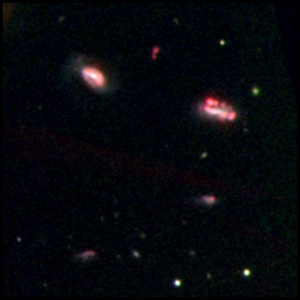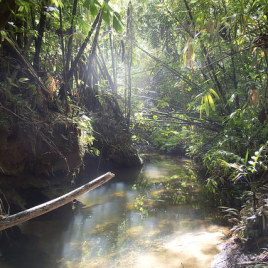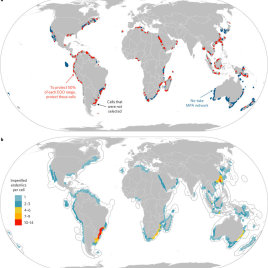
An optical image of one of the isolated galaxy groups observed with the Magellan Telescope in Chile. The red knots reveal emissions that signify recent and ongoing star formation. (Image by Kelsey E Johnson, Sandra E Liss, and Sabrina Stierwalt)
Galaxies are thought to form by the process of several smaller galaxies merging together. Now, scientists might be able to observe the process firsthand, after a recent discovery of seven groups of dwarf galaxies in the dark skies. The researchers used the largest optical survey of the night sky, as well as four different telescopes, to identify the tiny galaxies that vary from a tenth to a thousandth of the overall size of our Milky Way. If they’re lucky, the scientists say they might be able to observe as these seven groups of dwarf galaxies collide to form an intermediately-sized galaxy.
Authors:
S. Stierwalt, S. E. Liss, K. E. Johnson, D. R. Patton, G. C. Privon, G. Besla, N. Kallivayalil & M. Putman
Canadian author:
David Patton, Department of Physics & Astronomy, Trent University, 1600 West Bank Drive, Peterborough, ON, Email: dpatton@trentu.ca
Original paper published in Nature Astronomy on January 23, 2017.


